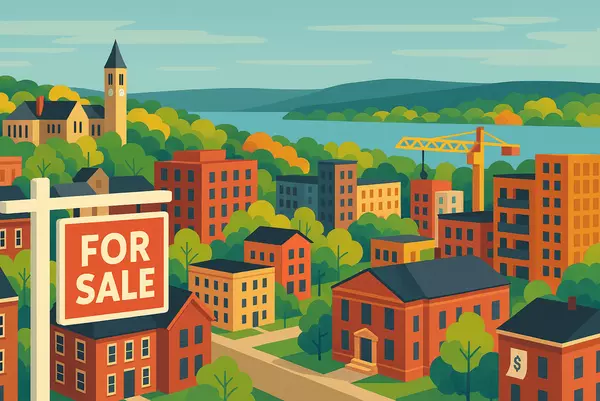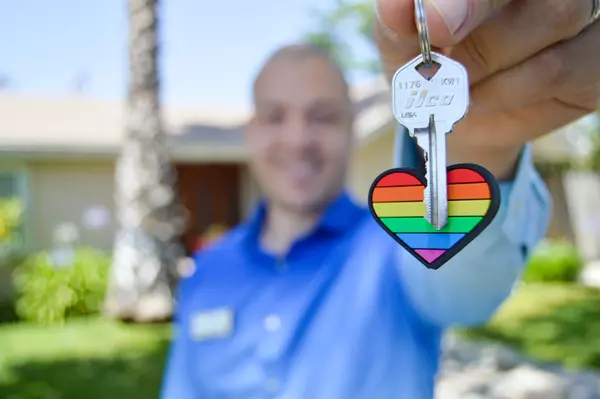9 Steps to Buying a Home (and 5 Phases)
If you're in the market for a new home, the process can seem daunting. But by breaking it down into a series of manageable steps you can make the experience less stressful and more enjoyable.
Here are 9 steps to follow when buying a home, organized into 5 phases.
Phase #1: Thinking
If you’re reading this post you’re in the Thinking Phase (at least). Be patient with yourself! Most buyers hang out in this phase for a number of years.
Analyze Your Finances
The first step is to analyze your financial situation to determine how much you can afford to spend on a new home. Consider your income, expenses, your credit rating, and any outstanding debts. Keep in mind you'll need up front money for a down payment and closing costs, and then ongoing cash flow for mortgage, taxes and maintenance. It’s key to establish a realistic budget for your specific situation.
Browse Property Listings
After you have an idea of your budget (most buyers browse before budgeting because it’s way more fun) begin browsing property listings online to get a sense of what's available in your desired location, size, and price range. Look at features, amenities, and neighborhoods to find the best fit for your needs. This step can help you narrow down your choices and start to focus on what you really want in a home.
Find a Real Estate Agent
It is crucial that you find a reputable real estate agent who can guide you through the buying process. They will help you find properties that meet your criteria. They will schedule your tours, write your offers, and negotiate with sellers on your behalf. Your agent can also provide you with valuable advice on market conditions, financing options, and potential pitfalls to watch out for. Make sure to find someone who you trust and feel comfortable working with. Start early!
Phase #2: Shopping
This is a big transition! You’ve been thinking for years about buying a property. Moving into the Shopping Phase means things are about to get serious.
Consult with a Mortgage Lender
Consulting with a mortgage lender is the next big step. Lenders can determine what types of loans you qualify for and get you pre-approved for a loan. This pre-approval will give you a clear sense of how much you can borrow and what your monthly payments would be. It's important to do this step early in the process so you know your budget and avoid any surprises down the road.
Tour Properties
Once you have your budget, property criteria, and team in place, it's time to start touring properties. Take your time to view multiple properties before making an offer. This will give you a better sense of the market and help you make an informed decision. Consider each property carefully and ask your agent any questions you may have. The more properties you see, the more confidence you’ll gain. Don't rush this step. It's important to find a home that meets all of your needs. And don’t get discouraged if you show up to a property and it’s a lemon — there’s still value in doing the tour and adding the property to your mental model of the market.
Phase #3: Writing
This is where the rubber meets the road. Writing refers to “writing offers”. Every offer you submit could potentially put you under contract. What’s important to understand about the Writing Phase is that it’s an emotional milestone. By now you’re financially and logistically ready — but that doesn’t necessarily mean you’re emotionally ready. Everything before this was abstract. Moving on from here means you’re about to make a commitment. It’s important to respect your emotional readiness.
Submit Offers
When you find a property you like, it's time to submit an offer. Make sure to take into account the property's condition, location, and investment value. Lean on your agent to help you write an offer that is competitive but also takes into account any potential repairs or issues. Be prepared to negotiate, and don't be afraid to walk away if the deal isn't right for you.
Phase #4: Signing
Your offer has been accepted! This is the most exciting part of the home buying process. By now you’ve probably lost a few bids. Maybe you’ve even begun to brace yourself for losing. Eventually, finally, a seller chooses your offer from the pile. Hearing this news is a jolt of energy.
Negotiate and Go Under Contract
If the seller likes your offer, negotiate until both parties agree on the final price and terms. This can be a complex process, but your agent will be there to help you navigate through it. You'll need to sign a purchase agreement and put down an earnest money deposit to show your commitment to the deal.
Remove Contingencies
One by one, remove your contingencies, such as attorney approval, home inspection, and financing. Each contingency has to be removed before the deal can close. For your mortgage application, you'll need to provide lots of documentation to your lender. Then they will determine how much cash you need to bring to the closing table. Work with your agent to set up your new utilities, change your address, and perform the final walk-through. Look to your bank to schedule the exact closing date. (The closing date in the contract is always considered “on or about”.)
Phase #5: Closing
This is the end of the line, the goal you have been working toward for so long. It can feel surreal. Although there’s a heavy lift ahead of you with the move, it’s important to take a moment to celebrate the milestone.
Close the Deal
On the closing date, you'll sign all the necessary paperwork and pay any remaining closing costs. Finally, you'll get the keys to your new home and take pride in the fact that you successfully navigated the complicated process of buying a house.
Conclusion
By following these key steps, you can make the process of buying a home less stressful and more enjoyable. Analyze your finances, find a real estate agent, consult with a mortgage lender, tour properties, submit an offer, negotiate and go under contract, remove contingencies, and close the deal. With a little patience and the right team in place, you'll be well on your way to finding the home of your dreams.







